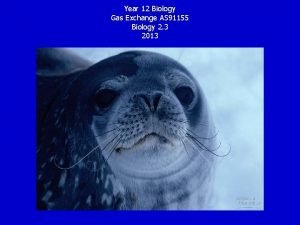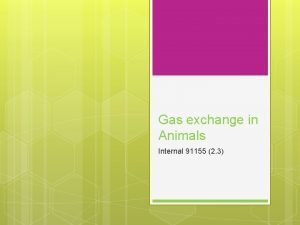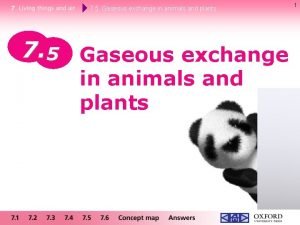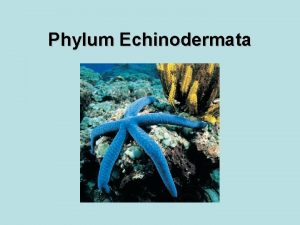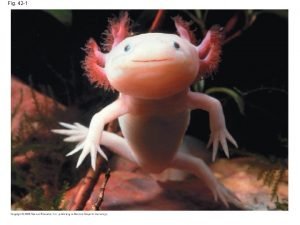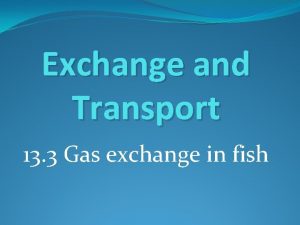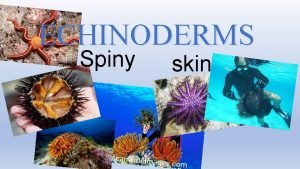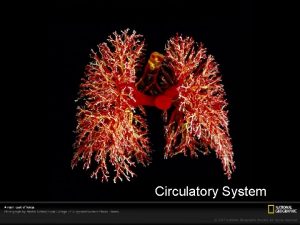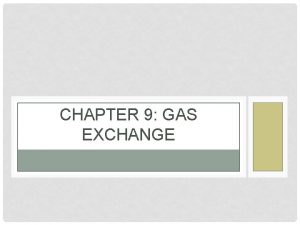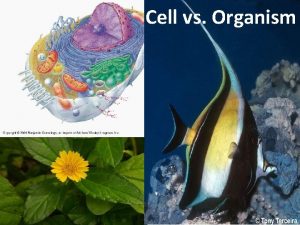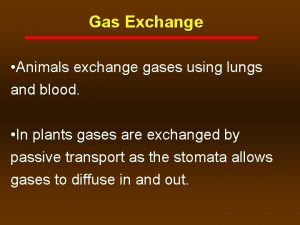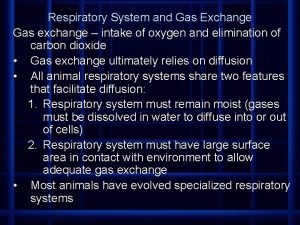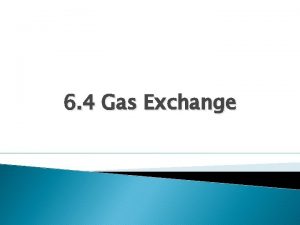Gas exchange in Animals Internal 91155 2 3














- Slides: 14

Gas exchange in Animals Internal 91155 (2. 3)

Gas exchange in animals All animals respire aerobically to release energy needed for cellular processes.

Gas exchange in animals All animals respire aerobically to release energy needed for cellular processes. Aerobic respiration needs oxygen and it releases carbon dioxide.

Gas exchange in animals All animals respire aerobically to release energy needed for cellular processes. Aerobic respiration needs oxygen and it releases carbon dioxide. These two gases need to be exchanged across membranes: - Skin cells (in earthworms, some amphibians)

Gas exchange in animals All animals respire aerobically to release energy needed for cellular processes. Aerobic respiration needs oxygen and it releases carbon dioxide. These two gases need to be exchanged across membranes: - Skin cells (in earthworms, some amphibians) - Through specialised organs – eg. Gills (fish) and lungs (reptiles, mammals, birds)

All gas exchange surfaces must be: Moist – O 2 must dissolve before it can diffuse

All gas exchange surfaces must be: Moist – O 2 must dissolve before it can diffuse Thin – reduces the diffusion distance, making diffusion quicker

All gas exchange surfaces must be: Moist – O 2 must dissolve before it can diffuse Thin – reduces the diffusion distance, making diffusion quicker Large in surface area – increases quantity of gases diffused per unit time.

Breathing Animals need to breathe to facilitate gas exchange.

Breathing Animals need to breathe to facilitate gas exchange. Breathing is a physical process, involving muscular contractions to move air or water over the gas exchange surfaces (eg. Alveoli in the lungs)

Breathing Animals need to breathe to facilitate gas exchange. Breathing is a physical process, involving muscular contractions to move air or water over the gas exchange surfaces (eg. Alveoli in the lungs) More rapid gas exchange allows for higher rate of respiration.

Breathing Animals need to breathe to facilitate gas exchange. Breathing is a physical process, involving muscular contractions to move air or water over the gas exchange surfaces (eg. Alveoli in the lungs) More rapid gas exchange allows for higher rate of respiration. This allows for increased metabolism and increased activity for the animal.

Transport of gases This takes place through the circulatory system in most animals.

Transport of gases This takes place through the circulatory system in most animals. Therefore, gas exchange and transport systems are in close contact.
 Gas exchange key events in gas exchange
Gas exchange key events in gas exchange Ventilation in birds
Ventilation in birds Gas exchange in plants and animals venn diagram
Gas exchange in plants and animals venn diagram Https//a-z-animals.com
Https//a-z-animals.com Consumer producer decomposer
Consumer producer decomposer Detritus food chain
Detritus food chain Animals that eat both plants and animals
Animals that eat both plants and animals Gaseous exchange in animals
Gaseous exchange in animals Addison currency exchange
Addison currency exchange Pearl exchange activity
Pearl exchange activity The actual exchange of gases occurs at the site of the *
The actual exchange of gases occurs at the site of the * Echinodermata
Echinodermata Fig 42
Fig 42 Countercurrent exchange in fish
Countercurrent exchange in fish Endoskeleton, often has spiny skin
Endoskeleton, often has spiny skin

